Felixer grooming traps are a novel, targeted and automated device to help control feral cats using 1080 gel.
Felixer grooming traps are more targeted than traditional baits and less labour-intensive than trapping or shooting. Currently, they are used for controlling feral cats in targeted areas such as sites of high value; threatened species populations in limited areas (e.g. rock wallabies and ground parrots); likely movement corridors, such as along exclusion fences, peninsulas; or riparian vegetation along waterways or areas with high food resources, such as tips. Research is underway to determine their potential for landscape-scale control. Up-front long-term lease costs can be relatively expensive.
Felixers use rangefinder sensors (old units) or a camera-based artificial intelligence system working in tandem with Lidars (new units) to distinguish target feral cats from non-target animals and humans. Targeted feral cats that pass within range of the unit are sprayed with a lethal dose (8 mg) of 1080 toxic gel.
Cats instinctively and fastidiously groom themselves, so a feral cat that has been hit with a dose of toxic gel will inevitably ingest this toxin. The Felixer takes a photograph every time the detection beam is crossed. Managers can use these photos to determine the effectiveness of the unit in targeting feral cats and potential risk to off-target animals as well as monitoring population changes in prey species.
The Felixer is solar-powered and automatically resets after firing. Each unit can hold 20 sealed cartridges of toxic gel before it needs to be reloaded with new cartridges. Currently, the Australian Pesticides and Veterinary Medicines Authority only allows 10 cartridges to be used at a time, unless it is impractical to service Felizers monthly.
Contact Thylation for costs, training modules and availability of Felixer units.

Felixers are solar powered, can be contain 10 cartridges that reset once fired, so they can be left for longer periods in the landscape. Photo: CISS, NFCFMC Program.
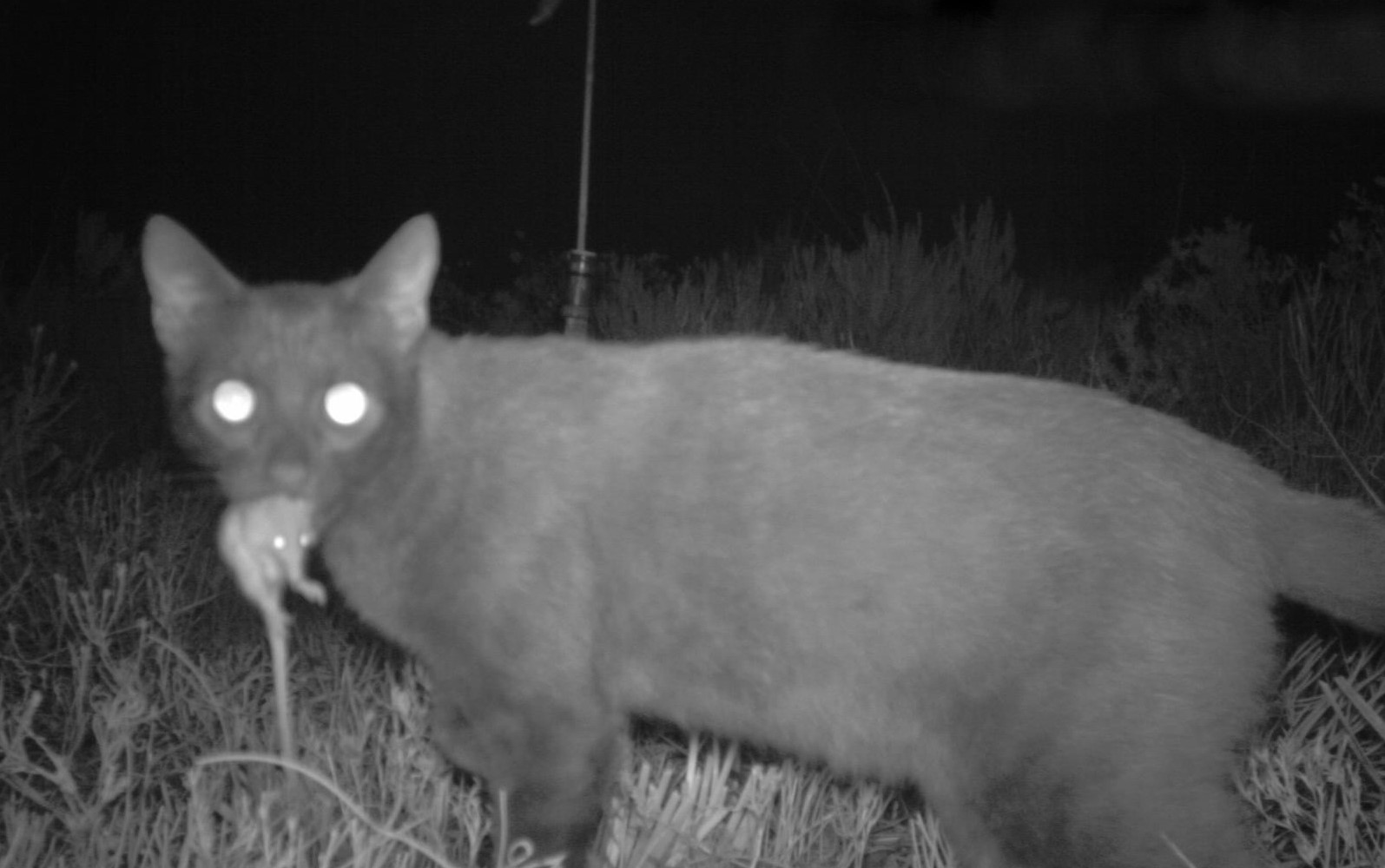
Artificial intelligence recognises a feral cat when it walks in front of the Felixer. This one has killed a honey possum. Photo: Jeff Pinder.
Advantages
- Felixers are very target-specific.
- Felixers are labour efficient and improve animal welfare.
- Felixers are a potential control option where baiting and shooting are not appropriate.
- May target individual feral cats that avoid baits or are difficult to trap or shoot.
- The device is adjustable to control the sensitivity and likelihood of firing on target feral cats and avoiding off-target animals.
- Felixers are programmable to play a variety of audio lures to attract feral cats.
- 1080 gel is encapsulated in the device so does not break down, until it is fired, like it does in traditional baits.
- The Felixer operates as a two-in-one monitoring and management device. All animals detected are photographed. This data can help users refine their management program’s use of the device and to monitor the success of suppression of invasive predators.
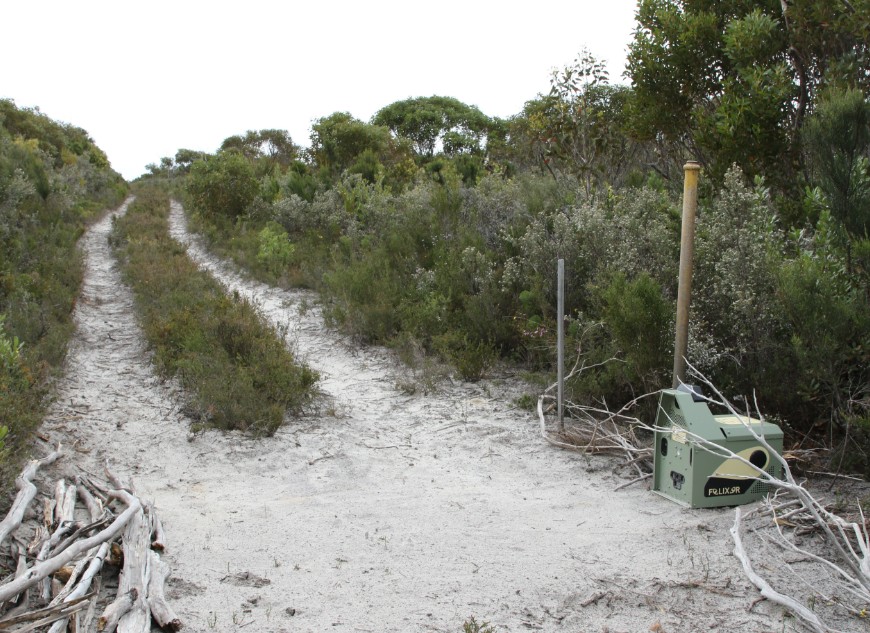
Toxic gel is encapsulated in a cartridge until discharged, so remains effective for longer than regular baits. Photo: CISS, NFCFMC Program.
Things to consider when using Felixer grooming traps
- The use of 1080 is strictly regulated in Australia. Legislation restricts the use of Felixers in some jurisdictions. Only authorised persons can receive or use the 1080 capsules. Training, permits and authorisation are required. These restrictions can add time in getting a feral cat baiting program off the ground.
- Relatively expensive initial outlay to prepay long-term Felixer lease. Timeframes to access units can be relatively long.
- 1080 is toxic to dogs and pet cats, although pets can be safeguarded by wearing bluetooth tags that deactivate Felixers. Inform neighbours and display signs where it is used.
- DO NOT deploy Felixer in toxic mode in areas where dingoes are present during whelping season and dingo populations are protected.
- DO NOT load Felixer 1080 cartridges into the Felixer until it has been used for a minimum of two weeks in photo-only mode and off-target species thresholds have not been exceeded. Photo-only timeframes may be longer in some jurisdictions.
- DO NOT deploy Felixer in toxic mode if greater than 0.5% off-target species have been incorrectly identified as targets in photo-only trials.
- Felixer units are leased from Thylation, which is an ongoing cost for management programs.
- Grooming traps are not effective for large, landscape-scale feral cat control without using other management tools.
- Old units may pose an unacceptable risk on off-target species such as koalas, malleefowls, cape barren geese, small dogs and puppies. New units with artificial intelligence cameras and required photo-only monitoring phases significantly reduce this risk.
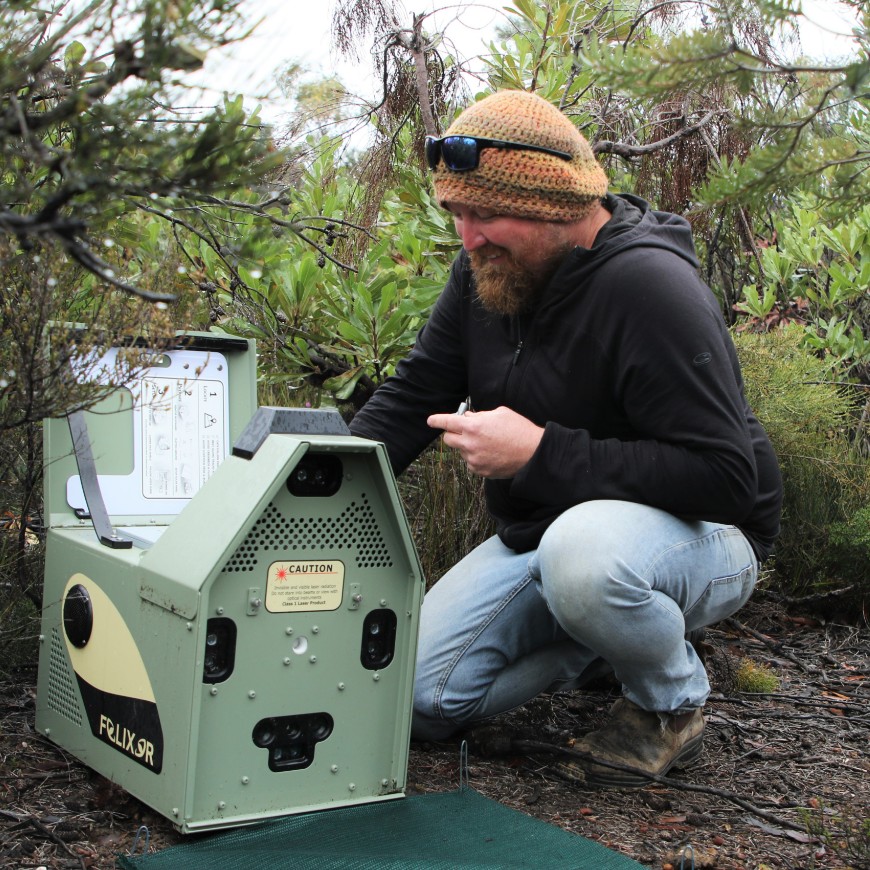
Only an authorised person with required training can operate a Felixer grooming trap. Photo: CISS, NFCFMC Program.
Effective use
Training, permits and authorisation are required for the use of 1080. The Felixer accreditation package provides details on operating Felixers and must be completed before cartridges are provided Use of Felixer grooming traps must adhere to Australian Pesticides and Veterinary Medicines Authority (APVMA) label instructions, and state and territory requirements. Careful planning, monitoring and adherence to regulatory guidelines, policies and standard operating procedures can increase the effectiveness of the use of Felixer units, while minimising risks to off-target species, including wildlife, livestock, pets and humans.
Correct placement of a Felixer grooming trap is crucial for effective feral cat control while safeguarding native wildlife and adhering to environmental regulations.
- Orientate the unit so the expected direction of a passing feral cat is perpendicular to the sensors. Preferred sites are narrow passages less than 4 metres wide, where a feral cat will pass by the unit in a predictable manner. Examples of these sites include along fences, roads or tracks where high feral cat activity has been observed.
- Clear debris to help ensure a passing feral cat is moving in a predictable manner.
- Place the unit on flat, even ground with a solid backdrop like vegetation, soil or rocks. Ensure an unobstructed area of at least 2 metres in front and to the sides of the trap for the sensors to function properly. Control weed growth to prevent interference with the sensors.
- The units rely on cameras for detection of feral cats. Place the trap facing south or east to avoid glare from direct sunlight, and prevent heat from affecting the unit.
- Keep the units away from flood zones, livestock pads and heavily trafficked areas.
- Adhere to guidelines about proximity to residences, watercourses, roads, and property boundaries as outlined by the label and state or territory authority.
- Neighbours must be notified before ‘arming’ the unit with 1080 and install required signage.
Felixers currently rely on 1080 toxin. The selective nature of the 1080 toxin, often tolerated by many native species, offers added species specificity.
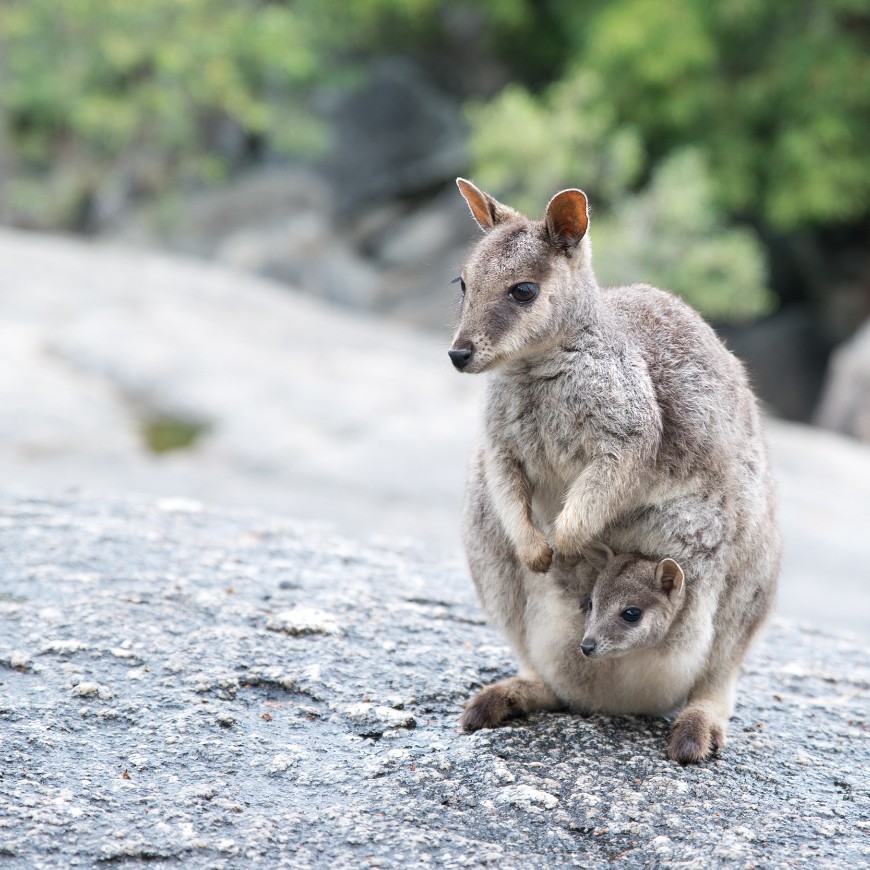
Felixers are useful for feral cat control in targeted areas such as rocky outcrops. Photo: Shutterstock.
Laws for using Felixer
Using 1080 products for controlling feral animals is strictly regulated in Australia. Use of Felixer cartridges must be undertaken in accordance with the label directions on the packaging and any state or territory requirements, if different to the label.
Appropriate and permissible baiting tools depend on the legislation in your state or territory. Training and permits are required for the use of Felixer units. Units can only be set with 1080 by authorised persons.
You must have landholder or land manager permission if setting Felixer units on someone else’s property or public land.
Contact your state or territory for more information on regulatory requirements for your program.
Banner photo: CISS, NFCFMC Program.
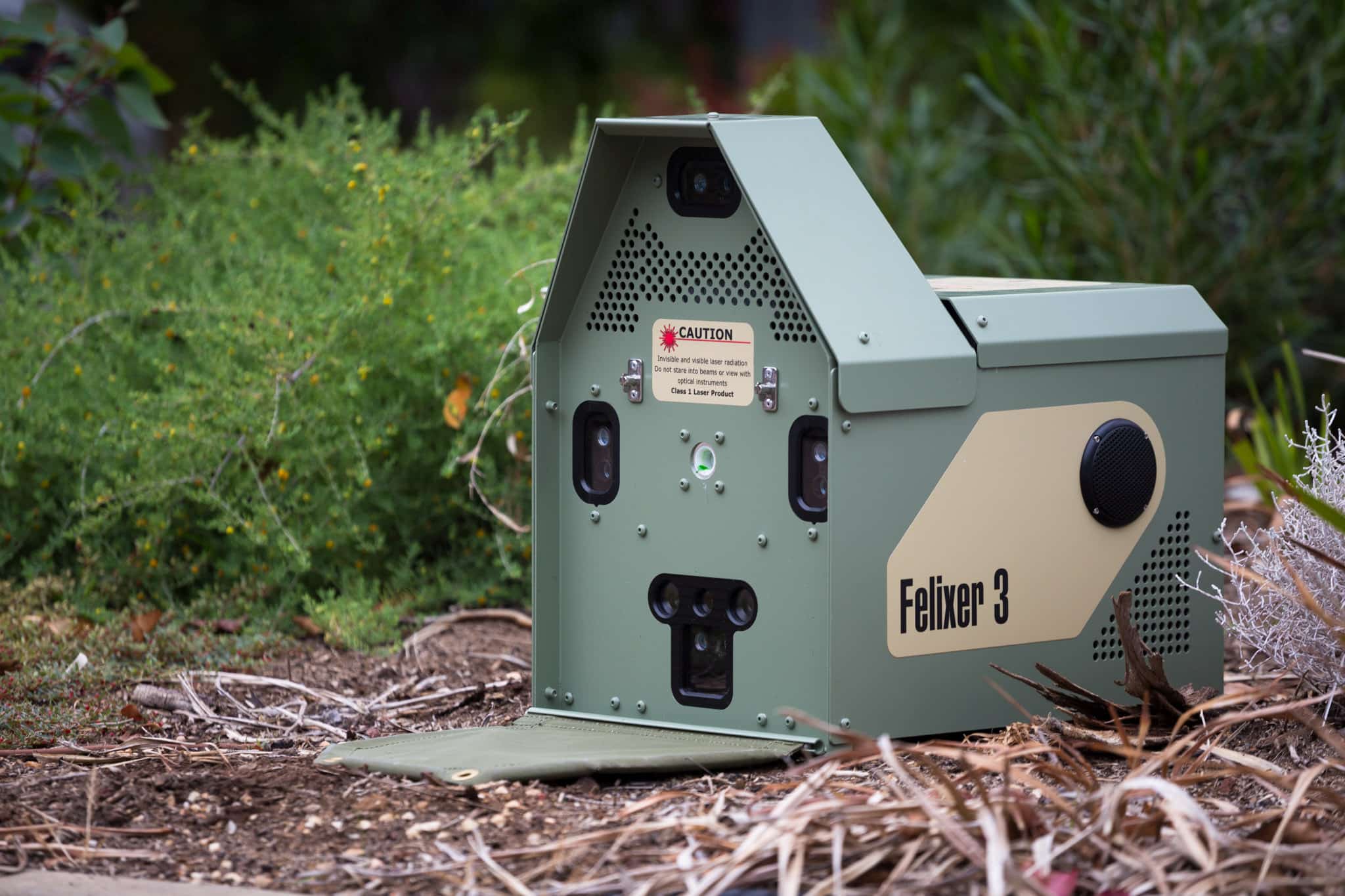
New models of the Felixer use a camera and lidar, along with AI to detect and confirm a feral cat. Photo: Thylation.
